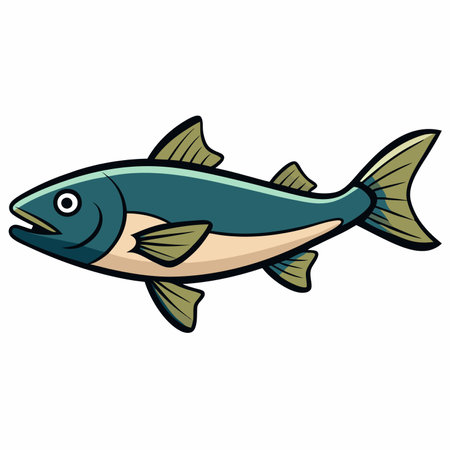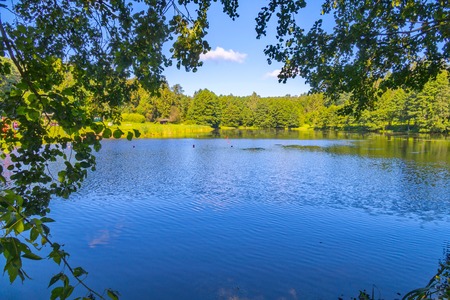1. Understanding Trout Species and Their Habitats
When it comes to trout fishing in the United States, three species stand out: rainbow trout, brook trout, and brown trout. Each of these fish has its own unique characteristics and habitat preferences, which influence where and when youll find them throughout the year.
Rainbow Trout
Rainbow trout are one of the most popular freshwater game fish in America. Known for their vibrant coloring—a pink stripe running down their sides—they thrive in cool, clear rivers and lakes with plenty of oxygen. Rainbow trout are often stocked in streams across the country, but wild populations are especially strong in western states like Colorado, Montana, and California.
Key Features of Rainbow Trout
- Color: Silver body with a pink or red stripe
- Preferred Habitat: Cold, fast-moving streams and rivers
- Region: Widely distributed, but especially common in the West
- Behavior: Active feeders during cooler months; seek deeper water in summer
Brook Trout
The brook trout is actually a member of the char family and is native to eastern North America. These fish prefer cold, clean waters—think shaded mountain streams or spring-fed creeks. Brookies are especially sensitive to water quality, so youll usually find them in remote or protected areas like national forests and parks.
Key Features of Brook Trout
- Color: Olive-green back with marbled patterns; red spots surrounded by blue halos
- Preferred Habitat: Small, cold streams with plenty of cover (logs, rocks)
- Region: Northeastern US, Appalachian Mountains, Great Lakes region
- Behavior: Most active during spring and fall; avoid warm temperatures
Brown Trout
Originally from Europe, brown trout have adapted well to American waters since their introduction in the late 1800s. They can tolerate warmer water than rainbows or brookies and are often found in larger rivers and even some lakes. Brown trout tend to be more elusive and wary, making them a favorite among seasoned anglers.
Key Features of Brown Trout
- Color: Golden-brown with black and red spots
- Preferred Habitat: Larger streams, rivers, and lakes; can handle slightly warmer water
- Region: Widely distributed from coast to coast; especially abundant in Midwest and Northeast
- Behavior: Often feed at night or during low light conditions; aggressive feeders in fall before spawning
Trout Species Comparison Table
| Species | Main Regions (U.S.) | Preferred Habitat | Main Activity Periods |
|---|---|---|---|
| Rainbow Trout | West, Rockies, Pacific Coast | Cold rivers & lakes, clear water | Cooled seasons (Spring/Fall) |
| Brook Trout | Northeast, Appalachians, Great Lakes | Tiny cold streams with cover | Spring & Fall (avoid heat) |
| Brown Trout | Nationwide; Midwest & Northeast strongholds | Larger streams/rivers/lakes (can tolerate warmth) | Dawn/dusk/night; Fall peak before spawn |
Why These Species Thrive Where They Do
The different habitats preferred by rainbow, brook, and brown trout explain why they thrive in certain American regions. Rainbows favor the fast-moving waters of western mountains where snowmelt keeps things cool. Brook trout need pristine headwaters commonly found in northeastern forests. Brown trout adapt easily and can be found almost anywhere there’s good structure and food—making them a staple across much of the country.
2. Spring Surge: Trout Activity as Waters Warm
How Spring Changes Trout Behavior
As winter gives way to spring, trout waters across the United States start to warm up. This change in temperature signals a major shift in trout behavior. Rainbow, brook, and brown trout all become more active, but each species responds to spring in its own way. Understanding these changes can help anglers make the most out of early-season fishing.
Spawning Cycles in Spring
Not all trout spawn at the same time, and knowing when each species spawns can be key to finding them in the right spots. Heres a quick look at typical spawning times for rainbow, brook, and brown trout:
| Trout Species | Spring Spawning? | Main Spawning Months |
|---|---|---|
| Rainbow Trout | Yes | March – May |
| Brook Trout | No (Fall) | September – November |
| Brown Trout | No (Fall) | October – December |
In spring, rainbow trout are actively spawning or finishing up their spawn. You’ll often find them in shallow riffles with gravel bottoms. Brook and brown trout finished spawning in the fall, so they are mainly focused on feeding and recovering energy during spring.
Feeding Habits: Hungry After Winter
The longer days and warmer water mean food sources like aquatic insects, worms, and small baitfish become more available. Trout metabolism speeds up, so they feed more aggressively after months of cold-water sluggishness. Here’s what each species typically looks for in early spring:
- Rainbow Trout: Eager for drifting insects, especially midges and mayflies.
- Brook Trout: Targeting small minnows and aquatic bugs along stream edges.
- Brown Trout: Going after larger prey like crayfish or even other smaller fish.
Best Tactics for Early-Season Success
Catching spring trout often means adapting your techniques to match their seasonal behaviors. Here are some proven tactics:
- Nymph Fishing: Use weighted nymphs or bead-head flies to get down where trout are feeding near the bottom.
- Bait Fishing: Nightcrawlers or salmon eggs work well, especially for rainbows during their spawn.
- Lure Selection: Small spinners or spoons mimic injured baitfish and trigger aggressive strikes from hungry browns and brooks.
- Tackle Tips: Lighter line and stealthy approaches are important as water is often clear and trout can be wary.
Quick Reference Table: Spring Tactics by Species
| Species | Main Locations | Baits/Lures/Flies | Tactics Tip |
|---|---|---|---|
| Rainbow Trout | Shallow gravel runs, riffles | Midges, worms, salmon eggs, small spinners | Target during or right after spawning runs |
| Brook Trout | Corners of streams, undercut banks | Nymphs, small minnows, soft plastics | Creep along banks; keep quiet and hidden |
| Brown Trout | Sheltered pools, behind rocks/logs | Larger streamers, crayfish imitations, spoons | Fish low light hours—early morning or late evening for best action |
With the arrival of spring, understanding these shifts in behavior will help you find active trout and increase your chances of landing that first big catch of the year!

3. Summer Strategy: Beating the Heat
How Summer Heat Impacts Trout Behavior
When summer temperatures rise, trout like rainbow, brook, and brown become less active during the hottest parts of the day. They seek out cooler waters because they need more oxygen to stay healthy and energetic. Warm water holds less oxygen, so trout naturally move to places where the water is colder and more comfortable for them.
Where to Find Trout in Summer
If you want to catch trout during the summer months, focus your efforts on areas where the water stays cool. Here are some top spots:
| Location | Why Its Productive |
|---|---|
| Deep Pools | Water is cooler and trout can rest in the shade |
| Spring-Fed Creeks | Springs provide a steady flow of cold, oxygen-rich water |
| Shaded Areas Under Trees or Overhangs | Trees keep sunlight off the water, lowering temperatures |
| Mouths of Cold Inlets | Inlets bring fresh, cool water into lakes or rivers |
Baits and Techniques for Hot Weather Trout Fishing
Catching trout in summer takes a bit of strategy. Since trout are less likely to chase after fast-moving lures when it’s hot, slow things down and try these tips:
- Go Early or Late: Fish at dawn or dusk when water temps are lower and trout are more active.
- Use Natural Baits: Worms, crickets, and small minnows work well because they mimic what trout are eating naturally.
- Light Line & Small Hooks: Clear water means trout are cautious. Use lighter line (2-4 lb test) and smaller hooks for a stealthy approach.
- Nymphs & Wet Flies: For fly anglers, drifting nymphs or wet flies near the bottom can be very effective during summer.
- Scented Artificial Baits: When fishing gets tough, try baits with added scent to attract lazy trout.
Table: Best Summer Baits by Trout Species
| Trout Species | Recommended Bait/Lure |
|---|---|
| Rainbow Trout | Corn, salmon eggs, small spinners, nymph flies |
| Brook Trout | Live worms, wet flies, grasshoppers, PowerBait nuggets |
| Brown Trout | Minnows, crayfish imitations, soft plastics, streamer flies |
Pro Tips for Summer Success
- Stay Stealthy: Low water levels make it easy for trout to spot you. Approach quietly and wear earth-tone clothing.
- Avoid Midday Sun: Focus on fishing shaded banks or deeper holes from late morning through afternoon.
- Catch and Release Quickly: Warmer water stresses trout. Handle them gently and release them fast to protect local fisheries.
4. Fall Feeding Frenzy and Spawning Runs
As the leaves start to turn and temperatures drop, trout fishing hits a high point in the fall. Rainbow, brook, and brown trout all sense winter is coming, and their behavior shifts dramatically. This is when they feed aggressively to bulk up for the colder months ahead—and for some species, it’s also the time to begin their spawning runs.
Why Fall Is Prime Time for Trout Anglers
During autumn, trout are on a mission: eat as much as possible. The cooler water temps hold more oxygen, making trout more active throughout the day. Brown and brook trout also move upstream to find gravel beds for spawning, while rainbows keep feeding hard before winter.
Trout Behavior in Fall at a Glance
| Species | Main Activity | Where to Find Them | Best Approach |
|---|---|---|---|
| Rainbow Trout | Binge feeding, prepping for winter | Riffles, deep pools, undercut banks | Use streamers & nymphs; fish early or late |
| Brook Trout | Spawning runs upstream; aggressive strikes | Small creeks, headwaters with gravel beds | Try egg patterns & small spinners |
| Brown Trout | Spawning migration & territorial behavior | Larger rivers, near tributaries & gravel bars | Use big streamers or jerkbaits at dusk/dawn |
Matching Your Tactics to Fall Conditions
The key to fall trout fishing is matching your tactics to their aggressive mood and changing locations. Here’s how you can up your odds:
- Go Bigger: Try larger lures or streamers—trout want calorie-rich meals before winter.
- Mimic Natural Prey: Use patterns that look like minnows, crayfish, or eggs, since these are what hungry trout chase now.
- Fish Moving Water: Look for riffles and seams where food washes through—active trout will be waiting there.
- Tweak Your Timing: Early mornings and late afternoons are often best as trout feel safe feeding in low light.
- Keep Quiet: During spawning runs, trout get wary. Use stealthy approaches near shallow gravel beds to avoid spooking them.
A Few Extra Tips for Fall Success:
- Packing an extra layer of clothing can make chilly mornings more comfortable.
- If you’re targeting spawning fish (especially browns and brooks), practice catch-and-release to protect future populations.
- Check local regulations—some streams close during spawning season or restrict certain methods.
5. Winter Tactics: Icy Waters and Cold-Water Trout
Understanding Winter Trout Behavior
When temperatures drop and rivers freeze, rainbow, brook, and brown trout don’t disappear—they adapt. In winter, trout slow down their metabolism and seek deeper, slower water where the temperature is more stable. They often group together in pools or near underwater structures for protection and warmth. Because food is scarce, they become more selective about what they eat, but will still bite if the opportunity is right.
Winter Fly Fishing Tips
- Go Slow and Small: Use smaller flies and slower presentations. Nymphs like zebra midges, pheasant tails, and small stoneflies work well.
- Fish Deep: Target deep pools and the bottom of runs where trout hold tight to conserve energy.
- Time It Right: The best bite often happens during midday when the sun has warmed the water a few degrees.
Popular Winter Flies
| Fly Pattern | Best For | Notes |
|---|---|---|
| Zebra Midge (#18-22) | All Trout Species | Mimics small aquatic insects abundant in winter |
| Pheasant Tail Nymph (#16-20) | Browns & Rainbows | Classic mayfly imitation; fish deep and slow |
| San Juan Worm (#14-18) | Brook & Rainbow Trout | Simple but effective in cold conditions |
| Egg Pattern (#14-18) | Browns & Rainbows | Mimics eggs drifting in current; irresistible in winter |
Ice Fishing Safety Tips
- Check Ice Thickness: At least 4 inches of clear ice is recommended for safe fishing.
- Avoid Moving Water: Stay away from inflows/outflows where ice can be thin or unstable.
- Wear Safety Gear: Bring ice picks, a throw rope, and always fish with a buddy.
- Dress Warmly: Layer up with insulated, waterproof clothing to prevent hypothermia.
Essential Winter Gear Checklist
| Item | Description/Why You Need It |
|---|---|
| Thermal Base Layers | Keeps your core warm under waders or outerwear. |
| Neoprene Gloves & Socks | Maintain dexterity while protecting against frostbite. |
| Iced-Up Rod Guide Cleaner (e.g., lip balm) | Keeps guides from freezing while fly fishing. |
| Icepicks/Rescue Spikes | Lifesaver if you fall through the ice—keep them around your neck. |
| Thermos with Hot Drink | A quick way to warm up on long winter days. |
| Sled or Sledge for Gear Transport | Makes carrying your gear on snow or ice easier and safer. |
| Tent or Ice Shelter (Optional) | Adds comfort by blocking wind and increasing warmth during ice fishing trips. |
Tactics for Each Trout Species in Winter
| Species | Main Habitat in Winter | Bite Window (Best Time to Fish) | Tactic Tip |
|---|---|---|---|
| Rainbow Trout | Deep pools of rivers/lakes, near cover like logs or rocks | Noon-3 PM (warmest part of day) | Nymphing with small midge patterns |
| Brook Trout | Sheltered spring holes, undercut banks | Noon-late afternoon | Nymphs or slow-moving streamers close to bottom |
| Brown Trout | Larger river pools, below dams where water is slightly warmer | Noon-sunset | Nymphs and egg patterns fished deep and slow |
Your Off-Season Adventure Awaits!
If you’re willing to brave the cold and use these winter tactics, you’ll discover that trout fishing can be just as rewarding in the off-season. Bundle up, stay safe, and enjoy the unique challenge of chasing rainbows, brooks, and browns beneath icy waters.


